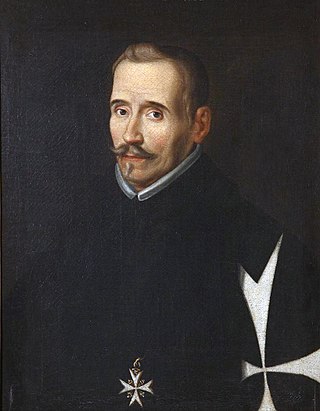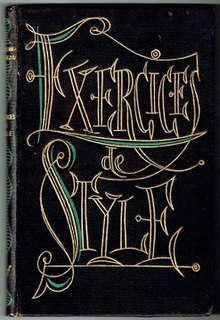The term sonnet refers to a fixed verse poetic form, traditionally consisting of fourteen lines adhering to a set rhyming scheme. It derives from the Italian word sonetto. Originating in 13th-century Sicily, the sonnet was in time taken up in many European-language areas, mainly to express romantic love at first, although eventually any subject was considered acceptable. Many formal variations were also introduced, including abandonment of the quatorzain limit – and even of rhyme altogether in modern times.
Oulipo is a loose gathering of (mainly) French-speaking writers and mathematicians who seek to create works using constrained writing techniques. It was founded in 1960 by Raymond Queneau and François Le Lionnais. Other notable members have included novelists Georges Perec and Italo Calvino, poets Oskar Pastior and Jean Lescure, and poet/mathematician Jacques Roubaud.

Raymond Queneau was a French novelist, poet, critic, editor and co-founder and president of Oulipo, notable for his wit and cynical humour.

Aladdin is a Middle-Eastern folk tale. It is one of the best-known tales associated with One Thousand and One Nights, despite not being part of the original text; it was added by the Frenchman Antoine Galland, based on a folk tale that he heard from the Syrian storyteller Hanna Diyab.
Inform is a programming language and design system for interactive fiction originally created in 1993 by Graham Nelson. Inform can generate programs designed for the Z-code or Glulx virtual machines. Versions 1 through 5 were released between 1993 and 1996. Around 1996, Nelson rewrote Inform from first principles to create version 6. Over the following decade, version 6 became reasonably stable and a popular language for writing interactive fiction. In 2006, Nelson released Inform 7, a completely new language based on principles of natural language and a new set of tools based around a book-publishing metaphor.

The C Programming Language is a computer programming book written by Brian Kernighan and Dennis Ritchie, the latter of whom originally designed and implemented the C programming language, as well as co-designed the Unix operating system with which development of the language was closely intertwined. The book was central to the development and popularization of C and is still widely read and used today. Because the book was co-authored by the original language designer, and because the first edition of the book served for many years as the de facto standard for the language, the book was regarded by many to be the authoritative reference on C.

Félix Lope de Vega y Carpio was a Spanish playwright, poet, and novelist who was a key figure in the Spanish Golden Age (1492–1659) of Baroque literature. In the literature of Spain, Lope de Vega is second to Miguel de Cervantes. Cervantes said that Lope de Vega was “The Phoenix of Wits” and “Monster of Nature”.
Barbara Winifred Wright was an English translator of modern French literature.

Göran Tunström was a Swedish author. He grew up in Sunne, Värmland County. Tunström's style is personal and intimate, and has a clear autobiographical tone. Although active as an established author for nearly four decades, it was particularly after his Juloratoriet was adapted as a movie in 1996 that he became widely known to the (Swedish) public. He participated in the Oslo International Poetry Festival.
Trina Schart Hyman was an American illustrator of children's books. She illustrated over 150 books, including fairy tales and Arthurian legends. She won the 1985 Caldecott Medal for U.S. picture book illustration, recognizing Saint George and the Dragon, retold by Margaret Hodges.
Christian poetry is any poetry that contains Christian teachings, themes, or references. The influence of Christianity on poetry has been great in any area that Christianity has taken hold. Christian poems often directly reference the Bible, while others provide allegory.
A film adaptation is the transfer of a work or story, in whole or in part, to a feature film. Although often considered a type of derivative work, film adaptation has been conceptualized recently by academic scholars such as Robert Stam as a dialogic process.
French Renaissance literature is, for the purpose of this article, literature written in French from the French invasion of Italy in 1494 to 1600, or roughly the period from the reign of Charles VIII of France to the ascension of Henry IV of France to the throne. The reigns of Francis I and his son Henry II are generally considered the apex of the French Renaissance. After Henry II's unfortunate death in a joust, the country was ruled by his widow Catherine de' Medici and her sons Francis II, Charles IX and Henry III, and although the Renaissance continued to flourish, the French Wars of Religion between Huguenots and Catholics ravaged the country.

"The Twelve Dancing Princesses" is a German fairy tale collected by the Brothers Grimm and published in Grimm's Fairy Tales in 1815. It is of Aarne-Thompson type 306.

99 Ways To Tell a Story: Exercises in Style is a 2005 experimental graphic novel by Matt Madden, published by the Penguin Group. Inspired by Raymond Queneau's book Exercises in Style, it tells the same simple story in 99 different ways. These ways include

The Decameron, subtitled Prince Galehaut and sometimes nicknamed l'Umana commedia, is a collection of short stories by the 14th-century Italian author Giovanni Boccaccio (1313–1375). The book is structured as a frame story containing 100 tales told by a group of seven young women and three young men; they shelter in a secluded villa just outside Florence in order to escape the Black Death, which was afflicting the city. The epidemic is likely what Boccaccio used for the basis of the book which was thought to be written between 1348-1353. The various tales of love in The Decameron range from the erotic to the tragic. Tales of wit, practical jokes, and life lessons also contribute to the mosaic. In addition to its literary value and widespread influence, it provides a document of life at the time. Written in the vernacular of the Florentine language, it is considered a masterpiece of early Italian prose.

"The Gigantic Turnip" or "The Enormous Turnip" is a cumulative Russian fairy tale, collected in Arkhangelsk Governorate and published in 1863 by folklore researcher Alexander Afanasyev in his collection Russian Fairy Tales, a collection not strictly Russian, but which included stories from Ukraine and Belarus alongside Russian tales. The tale is well-known in Ukraine as adapted by Ivan Franko
Massin, born Robert Massin, was a French graphic designer, art director, and typographer, renowned for his innovative experimentation with expressive forms of typographic composition. He stopped using his first name in the 1950s.

Herman Rudolf "Rudy" Kousbroek was a Dutch poet, translator, writer and first of all essayist. He was a prominent figure in Dutch cultural life between 1950 and 2010 and one of the most outspoken atheists in the Netherlands. In 1975 he was awarded the P.C. Hooft Prize for his essays.
99 Variations on a Proof is a mathematics book by Philip Ording, in which he proves the same result in 99 different ways. Ording takes an example of a cubic equation, and shows that its solutions are and using a different method in each chapter. The structure of the book was inspired by Oulipo co-founder Raymond Queneau's Exercises de style (1947). The book was published in 2019 by Princeton University Press.










